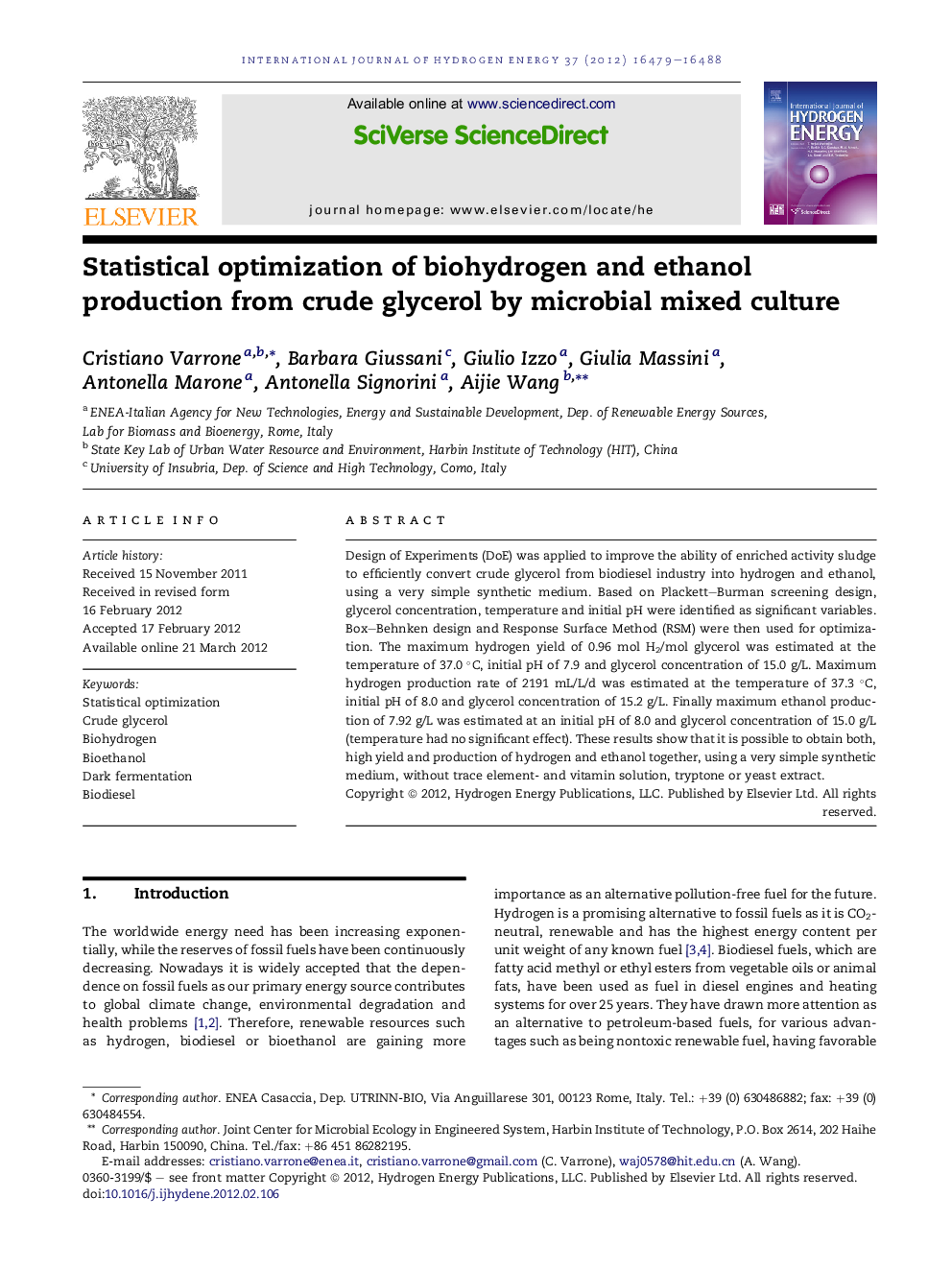| Article ID | Journal | Published Year | Pages | File Type |
|---|---|---|---|---|
| 1282179 | International Journal of Hydrogen Energy | 2012 | 10 Pages |
Design of Experiments (DoE) was applied to improve the ability of enriched activity sludge to efficiently convert crude glycerol from biodiesel industry into hydrogen and ethanol, using a very simple synthetic medium. Based on Plackett–Burman screening design, glycerol concentration, temperature and initial pH were identified as significant variables. Box–Behnken design and Response Surface Method (RSM) were then used for optimization. The maximum hydrogen yield of 0.96 mol H2/mol glycerol was estimated at the temperature of 37.0 °C, initial pH of 7.9 and glycerol concentration of 15.0 g/L. Maximum hydrogen production rate of 2191 mL/L/d was estimated at the temperature of 37.3 °C, initial pH of 8.0 and glycerol concentration of 15.2 g/L. Finally maximum ethanol production of 7.92 g/L was estimated at an initial pH of 8.0 and glycerol concentration of 15.0 g/L (temperature had no significant effect). These results show that it is possible to obtain both, high yield and production of hydrogen and ethanol together, using a very simple synthetic medium, without trace element- and vitamin solution, tryptone or yeast extract.
► Highly efficient biological conversion of crude glycerol from biodiesel stream. ► Maximum yield and production, both of hydrogen and ethanol at the same time. ► Statistical optimization of mixed consortium thanks to stability of enriched sludge. ► Results obtained without use of yeast extract, triptone, vitamin and mineral solution.
